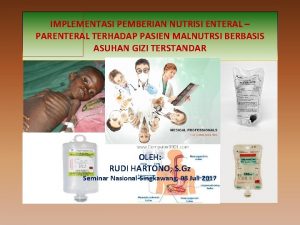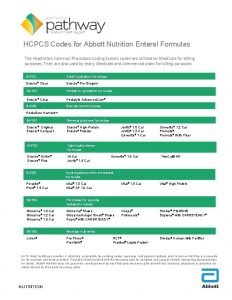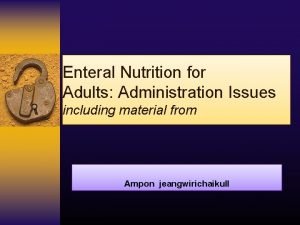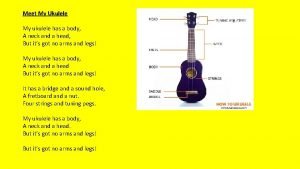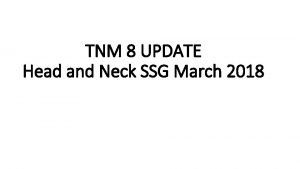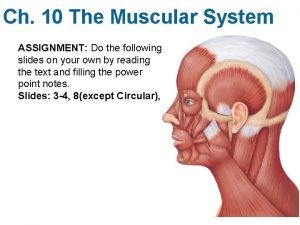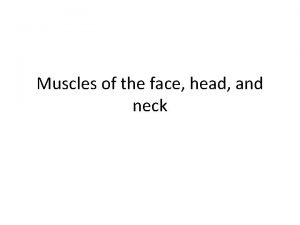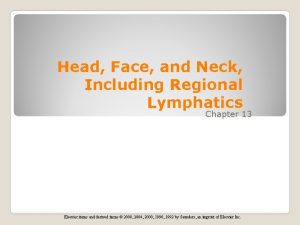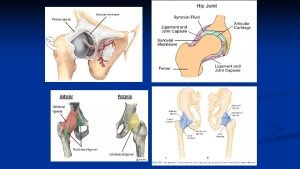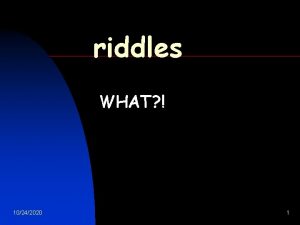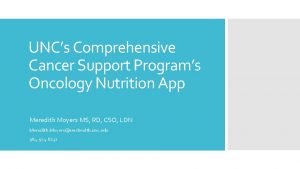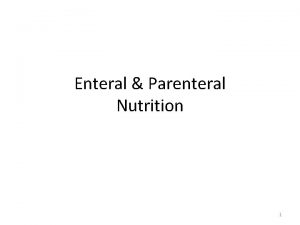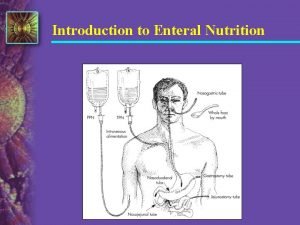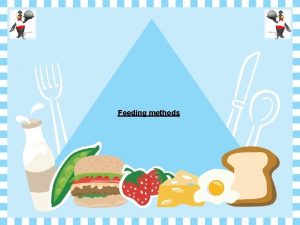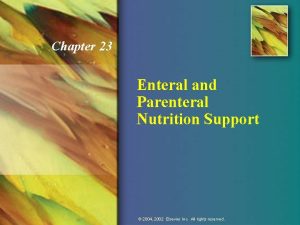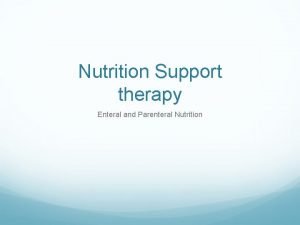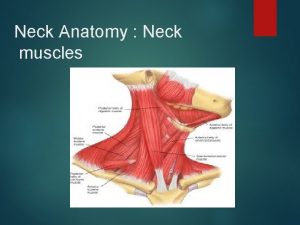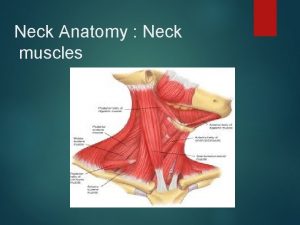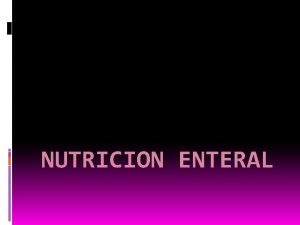Enteral Nutrition Support of Head and Neck Cancer














- Slides: 14

Enteral Nutrition Support of Head and Neck Cancer Patients Nutrition in Clincal Practice 22: 68 -73, February 2007 American Society of Parenteral and Enteral Nutrition

Head and Neck Cancer • In US: – Annual Incidence: 40, 500 – Death rate: 11, 170 – Impaired nutrition status: 25 -57%

Treatment and Treatment-Related Side Effects • Treatment: – Surgery – Radiotherapy (RT) – Combination of RT and chemotherapy • Result: – Poor food intake

Surgery • Side effects – Oropharyngeal dysfunction – Dysphagia • Postoperative complications – Infection – Orocutaneous fistulas – Wound dehiscence

Chemoradiation (CR) • Side effects – – – – Chewing / swallowing difficulties Nausea Altered taste sensation Xerostomia Changes in saliva viscosity Stomatitis Mucositis Anorexia

Nutrition Therapy • Enteral feeding – Why? • Functional stomach and lower GI tract • Safe and effective • Easily administered

Nutrition Support During Treatment of Head and Neck Cancer • Advantages of early enteral feeding: – – – Weight loss Dehydration Malnutrition Treatment interruption Improvements in nutrition parameters

Enteral Access • Nasogastric tubes: > 3 weeks • PEG placement – Long-term enteral nutrition

Feeding Formulas • Polymeric formulas – – Calorie: 1 -2 kcal/m. L Protein: 12 -20% CHO: 40 -60% Fats: 30 -40%

Nutrition Requirements • In general: – Calorie: 25 -35 kcal/kg – Protein: 1 -1. 5 g/kg – Fluid: 30 -40 m. L/kg

Long-Term Home Enteral Nutrition • Who? – Patients with chronic dysphagia • Enteral feeding for at least 1 year • Advantages: – Increased energy levels – Promote quality of life

Complications of Home Enteral Nutrition • • • Diarrhea Constipation Leakage from the fistula tract Tube-site infection Tube dislogement Tube clogging

Role of Nutrition Support Team • Nutrition support service – Provides education about the feedings – Care of the PEG tube – Regular monitoring of the patient

Summary • Patients are at high risk for malnutrition • Advantages of early enteral nutrition support: – – – Weight loss Nutrition deficiencies Dehydration Hospitalizations Quality of life
 Risk factors of head and neck cancer
Risk factors of head and neck cancer Nutrisi enteral dan parenteral
Nutrisi enteral dan parenteral Pediasure hcpcs code
Pediasure hcpcs code Enteral nutrition
Enteral nutrition Meet my ukulele song
Meet my ukulele song Tnm 8 head and neck
Tnm 8 head and neck My ukulele has a body a neck and a head song
My ukulele has a body a neck and a head song Muscular system head and neck
Muscular system head and neck Head and neck muscles
Head and neck muscles Regional write up head face and neck
Regional write up head face and neck Eccomoysis
Eccomoysis What has a neck but no head
What has a neck but no head Nutrition app cancer
Nutrition app cancer 40 to 1 dividing head chart
40 to 1 dividing head chart Flood suction pump
Flood suction pump

